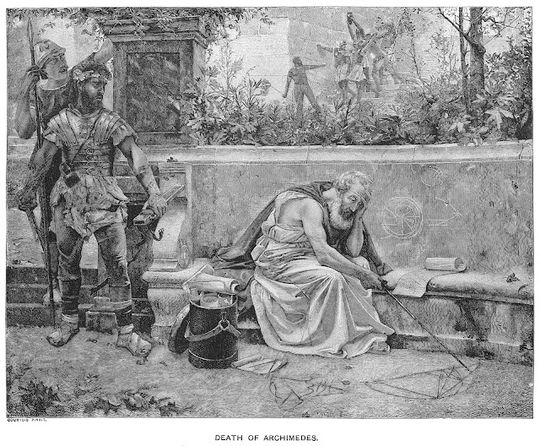In this article, we’re going to keep it short and sweet to cap off the amazing life of this grandiose man, a giant whose shoulders even Leonardo Da Vinci stood upon.
Archimedes was also one of the first to posit something akin to a hypothesis pertaining to the distance between celestial bodies as well as help establish the groundwork on a heliocentric model of the solar system, though he would have thought of it as the whole universe, as its scale is something even we puny mad gods, with our rockets and sticks, can only paw at conceptually. Speaking of, the concept of a center of gravity was apparently also posited by Archimedes.
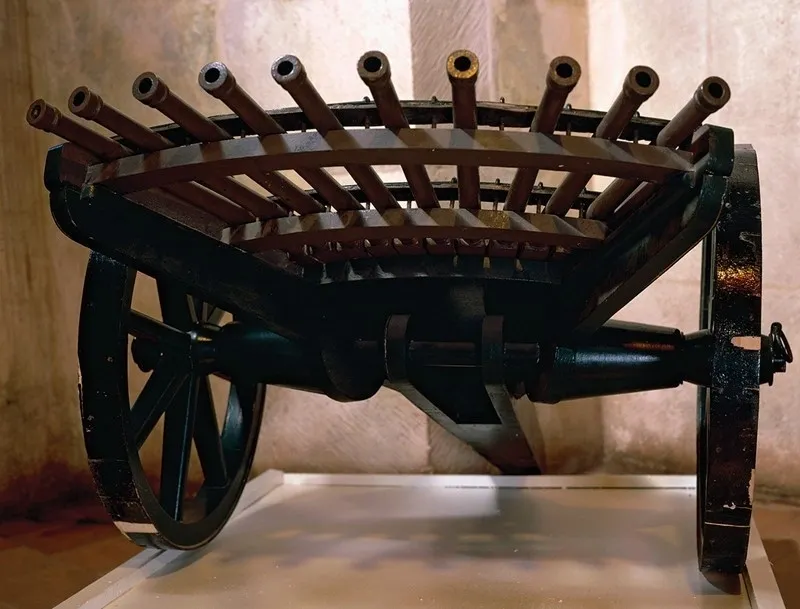
Physical Construction of Da Vinci's Steam Gun Concept, Orignated by Archimedes
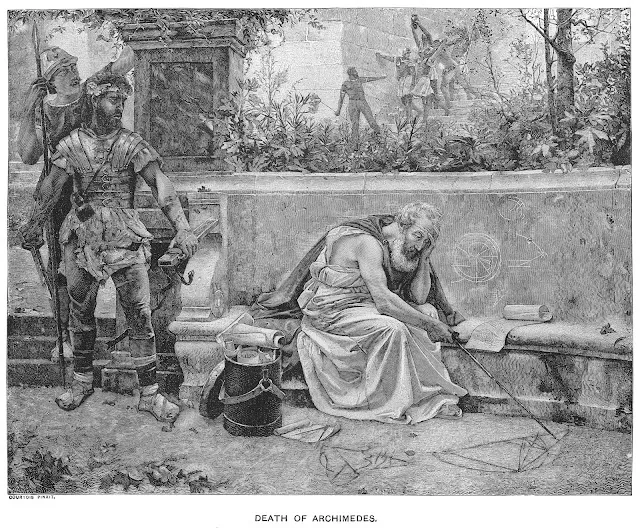
Gustave Courtois (1853-1923)-'death of Archimedes'-engraving
Despite orders not to kill the aging mathematician, the legionaries that found him, whether hopped up on rage fueled by experiences on the other side of his devastating war machines or simply not recognizing him for who he was, cut him down anyway. His last words to them were simply, “Do not disturb my circles,” before his blood painted the sand red, only to mix with the water at high tide.
His best friend, Heraclides, wrote the only biography of the man, but it didn’t survive to the modern day.
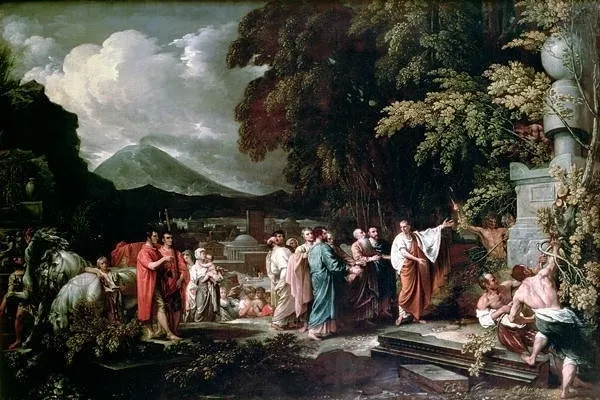
Cicero and his magistrates discovering the forgotten Tomb of Archimedes
“But from Dionysius’s own city of Syracuse I will summon up from the dust—where his measuring rod once traced its lines—an obscure little man who lived many years later, Archimedes. When I was questor in Sicily [in 75 BC, 137 years after the death of Archimedes] I managed to track down his grave. The Syracusians knew nothing about it, and indeed denied that any such thing existed. But there it was, completely surrounded and hidden by bushes of brambles and thorns. I remembered having heard of some simple lines of verse which had been inscribed on his tomb, referring to a sphere and cylinder modelled in stone on top of the grave. And so I took a good look round all the numerous tombs that stand beside the Agrigentine Gate. Finally I noted a little column just visible above the scrub: it was surmounted by a sphere and a cylinder. I immediately said to the Syracusans, some of whose leading citizens were with me at the time, that I believed this was the very object I had been looking for. Men were sent in with sickles to clear the site, and when a path to the monument had been opened we walked right up to it. And the verses were still visible, though approximately the second half of each line had been worn away.”
• Translation by Michael Grant in Cicero-On the Good Life, Penguin Books, New York, 1971, Pages 86-87.
While dusting away the brambles and weeds, Cicero took the time to transcribe the words etched into his tombstone, though I was unable to find them either. His tomb was marked by a sphere in a cylinder as a physical demonstration of Archimedes’ personal favorite and greatest mathematical achievement:
“If a sphere is inscribed in a cylinder, then the sphere is 2/3 the cylinder in both surface area and volume.” -Archimedes
Yet another mathematical achievement we owe to the mind of the man that coined the term “Eureka!”
The Palimpsest is a group of pages containing much of the work of Archimedes written in his native Doric Greek addressed as letters to his contemporaries. It is some of his only surviving work of his seminal writings of On Floating Bodies, Ostomachion, and Method of Mechanical Theorems.
The Palimpsest’s first version is believed to have been composed by Isidorus of Miletus, who was the architect behind the Hagia Sophia during the reign of the famed Emperor Justinian, often called the Last Roman Emperor. The copy in the Palimpsest was transcribed from the original in Constantinople during a period known as the Macedonian Renaissance in 950 CE, which is a time the study of math in the Greco-Byzantine world was witnessing a revival alongside many other great historical works by former Bishop of Thessaloniki,
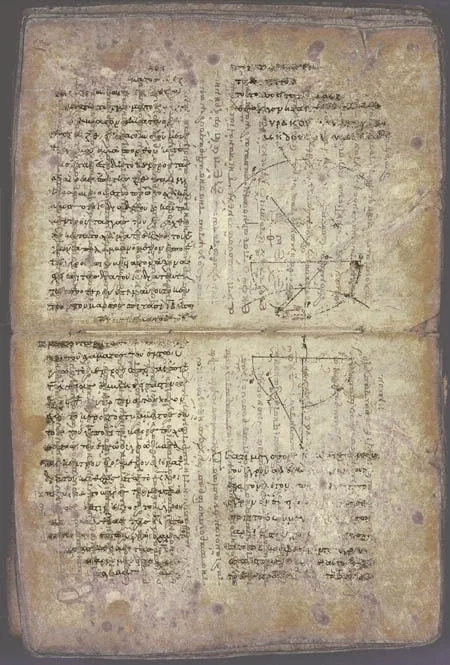
Excerpt from the Palimpsest; Recovered from a Prayer Book painted over the original work
If you couldn’t tell, all of this riles me up a bit.
Anyways, some more centuries passed and after a brief scandal involving a businessman attempting to paint over the works in order to increase the value of the book, we were granted the contents of the Palimpsest in its glory.
I gleaned over a lot there, but this could be its own article and I have to keep it moving.
As for the Tomb of Archimedes, no one really knows where its exact location is today, which would make Cicero roll over in his grave. After searching online, this photo is what I found:
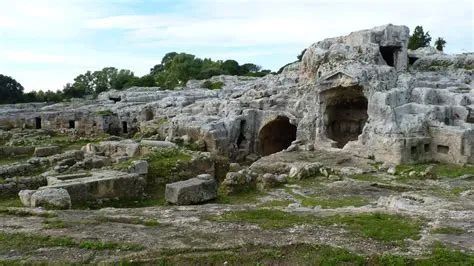
Necropolis Grotticelle
If we do find it, I’d like to make a similar pilgrimage to Cicero’s to pay homage to two great men. Archimedes, wherever he is buried, might perhaps prefer the peace. Afterall, we wouldn’t want to disturb his circles.

